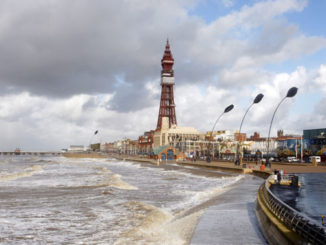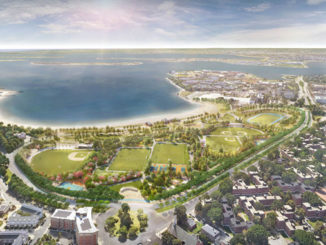In recent weeks there has been flooding in China with many cities experiencing heavy rainfall and urban flooding. The flooding has affected over 30 million people with more rain and typhoons still to come in the monsoon season the government is looking towards pushing pilot sponge city programs with the central government allocating 86.5 billion yuan(12.7 billion USD) in 2015 for a three-year pilot program to build urban sponge facilities.
Wuhan has experienced over 500mm in the past week which is more than is one-third the city’s annual rainfall and is one of the 16 pilot sponge cities and there has been heated debate on social media whether this has contributed to the flooding. However, experts such as Li Dihua, an associate professor from Peking University’s College of Architecture and Landscape Architecture have quashed these arguments stating that designing urban spaces to harvest water where not meant to tackle extreme flood events that have recently occurred. He also stated that going back to old methods of flood control with dams and fortification would be a waste of public money. Wuhan is vulnerable to flooding due to development filling in wetlands and lakes around the city with only 38 of the 127 lakes left in the city.
The central government program is to have 20 per cent of cities with a modern sewer systems and infrastructure allowing efficient rainwater absorption by 2020 and 80 per cent by 2030. Successful examples of the pilot program include Binhu Square in Nanning where the granite and concrete paving were replaced with permeable and sandy materials and now harvests water to be used to irrigate local vegetation and have led to less flooding issues in a city known to receive over 1,300mm (51.6 in) of annual rainfall.
What is a sponge city?
A sponge city is obvious in the name in that it wishes to absorb as much water as possible and retain the water for future use, and like a sponge when it reaches saturation point passes the water into large rivers and natural hydrological systems. The concept is similar other to Low Impact Development (LID), Sustainable Drainage Systems (SUDS) and Water Sensitive Urban Design (WSUD). Chinese look more towards redesigning and retrofitting existing urban areas, and also designing new urban areas to better capture, clean and reuse water. Designing a sponge city includes wetlands, bioswales, retention ponds, rain gardens, green roofs, continuous green spaces, permeable surfaces and increasing porous areas as much as possible in urban areas.
Watch Li Dihua presentation at the Ideas Lab at the World Economic Forum below for more insight into sponge cities.
SOURCES: CCTV, Xinhua, Caixin, World Economic Forum.
Read more about Sponge Cities at
SPONGE CITIES: WHAT IS IT ALL ABOUT? – Filippo Boselli – World Future Council
http://www.power-to-the-people.net/2016/01/sponge-cities-what-is-it-all-about/
Sponge Cities: An Answer To Floods – by Yuanchao Xu
http://chinawaterrisk.org/resources/analysis-reviews/sponge-cities-an-answer-to-floods/



